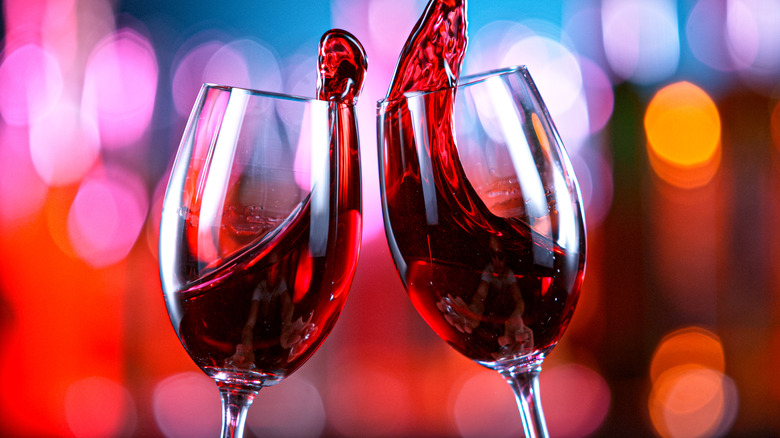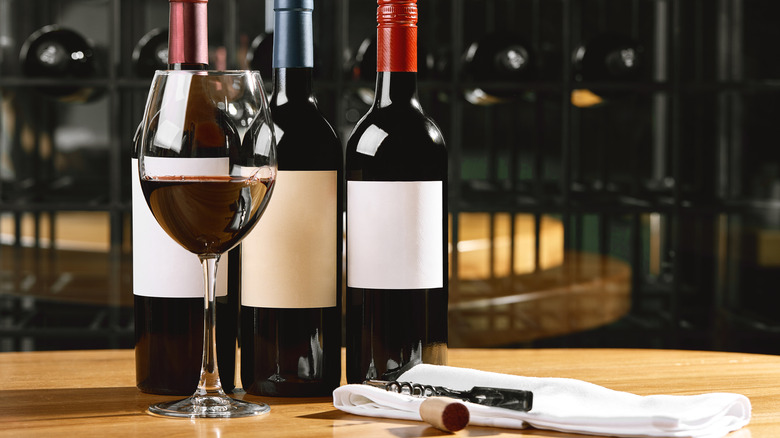How Do You Know If Wine Has Artificial Coloring?
The color in red wine comes from grape skin contact with juice during fermentation; specifically, from anthocyanins, which are pigments found in the skins.
At least, that's how most red wines get their color. Some winemakers (typically of bulk wines, but not always) may also enhance the natural color of wines via artificial means. There are over 75 legally permissible additives in the U.S., for example, which are used to manipulate wine, from filtering and preservative interventions to additives that target consistency and color. Among the latter are colorants with evocative names like Mega Red and Mega Purple. In 2017, Andrew Waterhouse, an enologist at the University of California at Davis, gave a frank industry assessment to Smithsonian Magazine, noting that it isn't just bulk winemakers who are using these color additives. Some producers of pricier wines are doing it, too.
This begs at least two important questions: How can you tell if the wine you're about to buy has been artificially colored? And how much should you care? After all, if the manipulation of wine enhances your enjoyment of it, and it has no adverse safety impacts, then it shouldn't be a big deal. Right?
Why artificial colorants matter
Just because your tongue or teeth are purple after drinking red wine doesn't mean artificial colorants have been used. Red wine can do that naturally.
So how can you tell if the wine has been artificially colored? Well, some colorants by law must be listed on the wine's label. These include carmine and cochineal extracts, which are pigments sourced from prickly pear cactus dwelling insects called cochineal. It's a bit gross, but safe (barring rare allergies). Other colorants like Mega Red and Mega Purple are made from grape juice concentrates, and thus don't have to be disclosed on wine bottles — meaning, it's impossible to tell which producers are adding them to wines. Their use may seem unsavory, but there are no reported health impacts, per Smithsonian.
Why do winemakers resort to color-rich additives? For the same reason dyes are used on food. Consumers apparently favor a certain depth and intensity of color. It's not a recent trend. Artificial color additives have been used in wine production for more than 2,000 years, according to the Food and Drug Administration. Mega Purple, meanwhile, has seen brisk sales dating back to the 1970s.
But the use of these artificial colorants, and their prevalence, does matter — at least to those who value wine as an expression of an individual terroir. Although additives have inarguably improved the quality of most wines, colorants don't improve taste: only aesthetics. Meanwhile, they contribute to wine's increasing homogeneity, and mask the regionally distinct characteristics beloved by wine connoisseurs.

